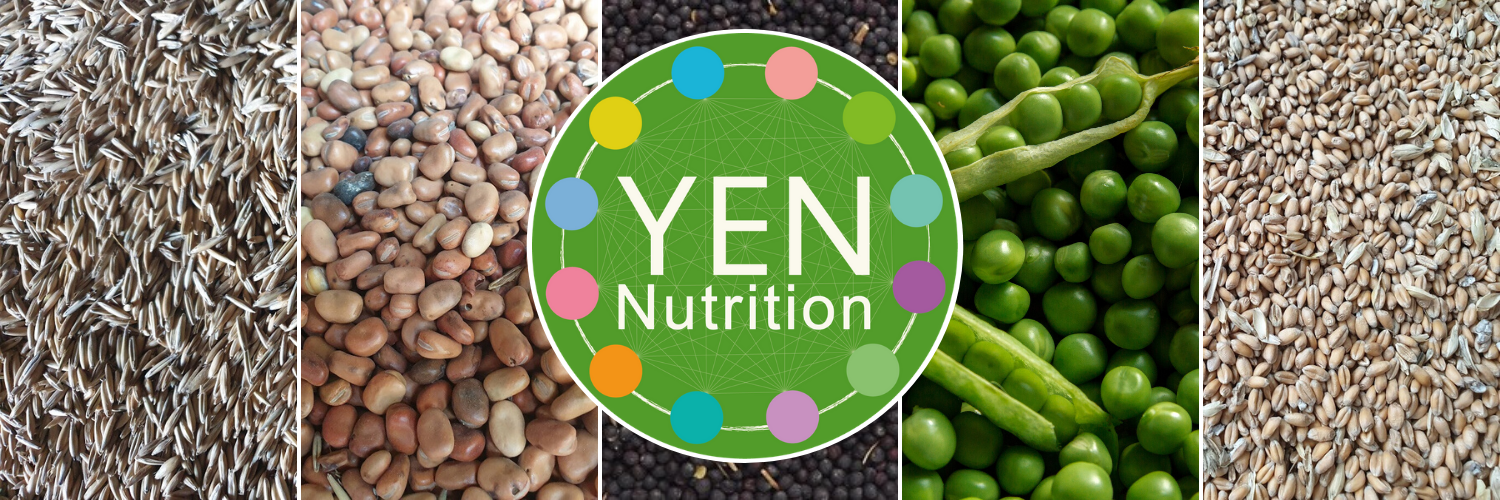
Sustainable human nutrition depends on growing crops – of course – but also nutrients must be re-cycled. Ultimately, to achieve sustainability, most nutrients applied to crops will need to come from organic sources in the soil, in manures, biosolids and in other organic materials. Fertilisers (and even legumes which fix nitrogen from the air) are almost all loading extra reactive nutrients onto the land, hence into the environment, so ‘down the line’ they devalue the quality of the air we breathe, or the water and landscapes we enjoy. So how do we make this massive change? The first step is surely to measure what we are doing … this is the century of data, hence of measurements … “to manage, so must we measure” … so we need to think of measuring nutrients field by field and farm by farm if we are to manage nutrition better.
Farms primarily produce and sell energy – edible energy. We sell and trade crops and food by weight – weight is a good measure of energy, because metabolisable energy in food is fairly constant – 10-14 MJ per dry kilogram – less if fibrous, more if oily. So, measuring crop yields is a first step. But often unrecognised in crop sales are the essential mineral nutrients that they contain, usually unmeasured but nevertheless valued by the feed or food processors who buy them – they often quote them on their labels.
![]()
Fig. 1: Almost all human & livestock nutrients come from crops (Fig. 3 has key to symbols).
How many and how much nutrient do farms lose in crop sales? The answer is 17 (see Fig. 1) .. and each year most farms sell tonnes of these! Of the 17 mineral nutrients essential in human or livestock diets, most (11) are also essential to crops, and only 1 is needed by crops but unneeded by animals: Boron. So, there are plenty of reasons to know what nutrients each farm is selling.
At present national guidelines for crop nutrient management (RB209) are more focussed on applying fertilisers than on recycling nutrients. So the advice is to apply tonnes of nitrogen (N) on most fields and to also keep soils topped up with P & K, and because most of our livestock are now kept a long way away from most of our crops, and most towns are distant too, this means using fertilisers rather than recycling last year’s crop nutrients by making applications of manures or biosolids.
We can only expect farms to achieve nutrient recycling slowly. For example, when turning crop energy into electrical energy with Anaerobic Digestors, we must recycle the digestates. But at least we can start by appreciating more carefully the nutrient quantities being removed field by field on arable farms, hence the need for replacements. The first step is to register the quantities of grain being exported from fields; then the next step is to register how much nutrient is going away with that grain. The YEN has been making the necessary measurements field by field since 2016, and YEN members have seen surprising levels of variation compared to the standard nutrients per tonne assumed in RB209 (Fig. 2).
![]()
Fig. 2: Wheat grain in YEN 2020, as in all years, showed big variation in P2O5 & K2O contents.
The average cost of this uncertainty for an average field exceeds the cost of grain analysis simply in the value of P & K fertilisers, so it is clearly worth analysing grain from each field just to get P & K maintenance right. Results from YEN also show grain nutrients are indicative of straw nutrients; although grain holds less than half of nutrients like K & B (Fig. 3), grain analysis makes straw analysis unnecessary. But grain analysis also tells about all nutrients, especially N, and by comparing with other farms in the same season and with critical nutrient concentrations, grain analysis shows whether a farm’s nutrition overall is generous or stingy. This has big implications both financially and for the environment. YEN Nutrition results in 2020 indicated clear farm differences, sometimes showing yields restricted by uptake of N or P, and sometimes showing applications being inefficient or unnecessary. Grain N levels indicated that 19% of fields lost more than £5,000 of potential returns through insufficient N uptake and another 5% lost this much through N uptake being excessive! Additionally, grain P levels indicated that over half of all fields were losing more than £1,000 of potential returns through insufficient P uptake.
![]()
Fig. 3: Average split between grain and straw of each crop nutrient in 30 wheat crops from YEN 2020.
So, sustainable nutrition must start by measuring the nutrients we harvest. “To manage nutrition, so we must measure nutrients.” It seems best to start with grains, because most nutrient exports from farms are in the grains they sell, rather than in direct losses to the environment. Grain analysis raises all sorts of surprises and questions so we have established the YEN Nutrition Network where analyses can be shared and explained, and clubs can be formed to discuss how nutrition can be improved farm by farm.
